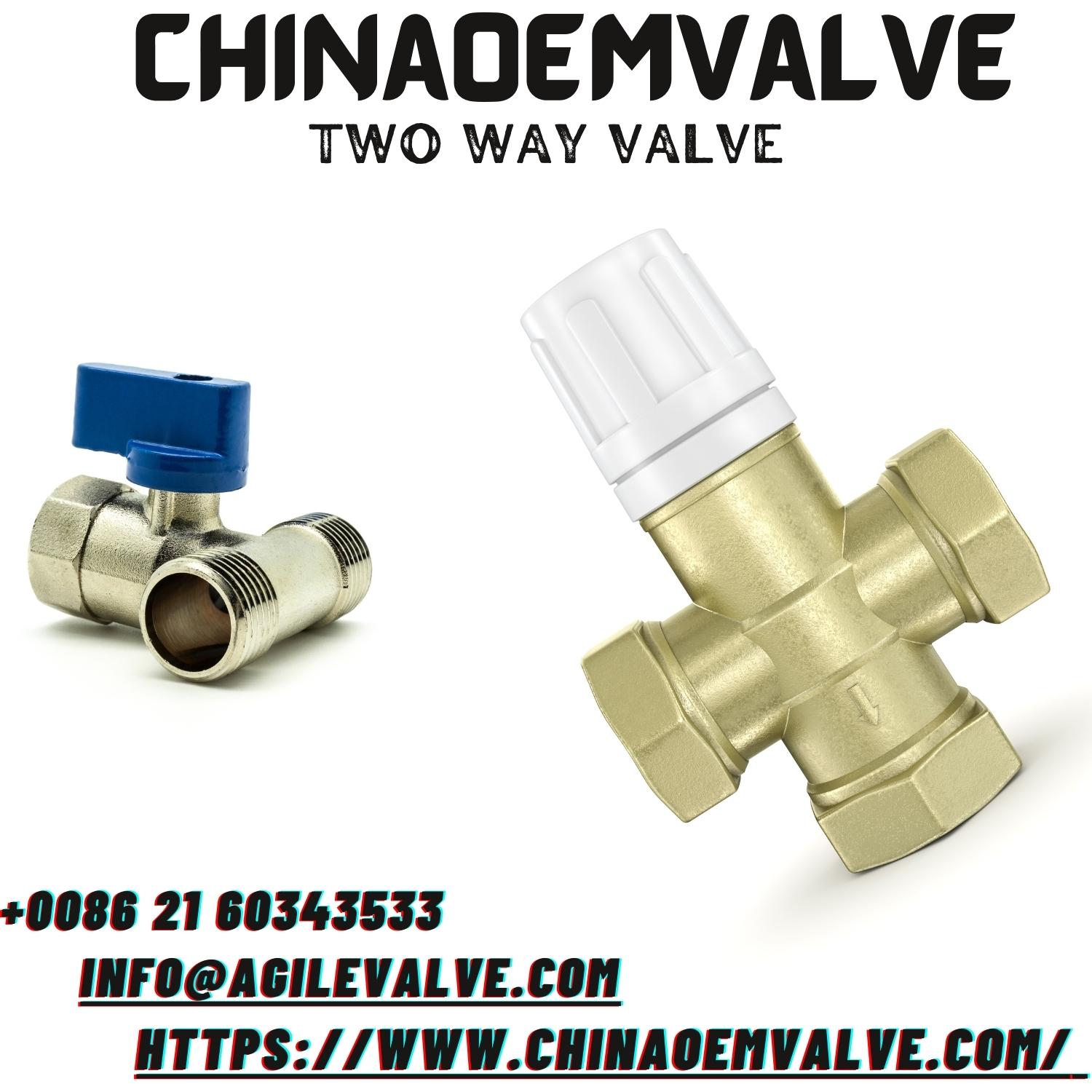Two way valve, also known as 2/2-way valves or shut-off valves, are essential components in fluid control systems that play a crucial role in regulating the flow of fluids such as liquids and gases. These valves are designed to have two ports: an inlet and an outlet, along with a control mechanism that allows the operator to open or close the valve. In this article, we will explore the unique characteristics of two-way valves, their applications, and how they function in various fluid control systems.
Characteristics of Two-Way Valves:
-
Two Ports: Two-way valves have two ports: an inlet and an outlet. The inlet is where the fluid enters the valve, and the outlet is where it exits or is redirected.
-
On/Off Functionality: The primary purpose of a two-way valve is to control the flow of fluid by either allowing it to pass through when the valve is open or stopping it when the valve is closed.
-
Simple Design: These valves typically have a straightforward design, making them easy to install and maintain.
Functioning of Two-Way Valves:
Two-way valves operate using a control mechanism, which can vary depending on the type of valve. However, the basic principle remains the same: the valve is either open or closed.
-
Open Position: In the open position, the valve allows fluid to flow freely from the inlet to the outlet. This is achieved by aligning the internal passageway of the valve with the inlet and outlet ports, creating an unobstructed path for the fluid.
-
Closed Position: When the valve is closed, the internal mechanism blocks the flow path, preventing the fluid from passing through. This is typically achieved by rotating a disk or moving a plug or piston into a position that obstructs the flow path.
-
Control Mechanisms: Two-way valves can be actuated using various methods, including manual handwheels or levers, electric solenoids, pneumatic or hydraulic actuators, or even automated control systems such as PLCs (Programmable Logic Controllers).
Applications of Two-Way Valves:
Two-way valves find applications in a wide range of industries and systems:
-
Water and Wastewater Treatment: In water treatment plants, these valves are used to control the flow of water and chemicals for processes such as filtration, chlorination, and pH adjustment.
-
Industrial Processes: They are essential in industrial settings for regulating the flow of various fluids, including steam, oil, and chemicals.
-
Heating, Ventilation, and Air Conditioning (HVAC): Two-way valves are used in HVAC systems to control the flow of hot or cold water through heating or cooling coils to maintain temperature levels in buildings.
-
Automotive: They play a role in controlling fluids in vehicle systems, such as engine coolant, brake fluid, and fuel.
-
Food and Beverage: These valves are employed in the food and beverage industry for controlling the flow of liquids during processing and packaging.
-
Pharmaceuticals: In pharmaceutical manufacturing, two-way valves are used for precise control of ingredients and processes.
-
Chemical Processing: They are crucial for regulating the flow of chemicals in chemical processing plants.
In conclusion, Two way valve are fundamental components in fluid control systems, providing precise control over the flow of liquids and gases in a wide range of applications. Their simplicity, reliability, and versatility make them indispensable in various industries where fluid control is essential. Whether manually operated or automated, these valves ensure that fluids are directed, stopped, or redirected as needed, making them a cornerstone of modern engineering and industry.
For more information visit chinaoemvalve.


